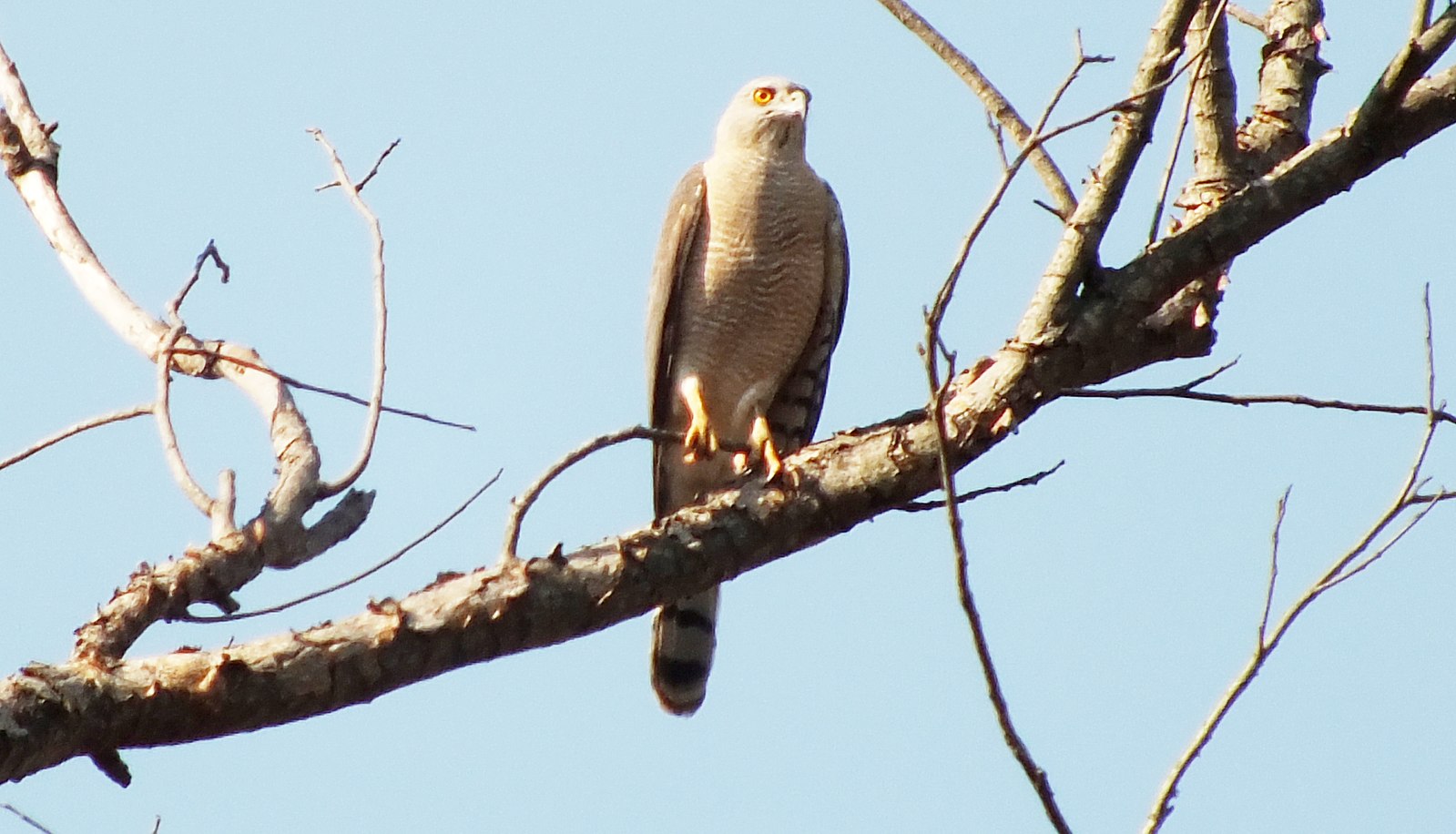Shikras, also known as the little banded goshawk, are birds of prey that are known for their hunting skills. While they primarily feed on small mammals, birds, reptiles, and insects, there have been rare instances where shikras have been observed feeding on carrion or dead animals.
Shikras’ Feeding Habits
Shikras are primarily carnivorous and feed on a variety of small prey. Their diet typically includes:
- Small mammals such as rodents and squirrels
- Small birds
- Small reptiles like lizards and snakes
- Insects
Shikras are known for their patient hunting strategy. They sit hidden in the foliage and survey the ground for unsuspecting prey to strike and kill quickly with their long and strong legs, toes, and talons.
Do Shikras Eat Dead Animals?
 Image source: SHIKRA by Shiv’s fotografia
Image source: SHIKRA by Shiv’s fotografia
While shikras are not known to be scavengers, there have been rare instances where they have been observed feeding on carrion or dead animals. One such instance was reported where a male shikra was found feeding on a dead chick at the nest.
However, these instances are relatively uncommon, and shikras are generally not considered to be regular consumers of dead animals. Their primary hunting strategy involves stalking and killing live prey, which they then consume.
Factors Influencing Shikras’ Feeding Behavior
There are a few factors that may influence a shikra’s decision to feed on dead animals:
-
Food Scarcity: In times of food scarcity or when their primary prey is scarce, shikras may turn to carrion as an alternative food source.
-
Opportunistic Feeding: Shikras may occasionally come across dead animals and take advantage of the available food source, even if it is not their preferred prey.
-
Parental Care: In some cases, shikras may feed on dead animals to provide food for their young, especially when live prey is difficult to obtain.
Shikras’ Habitat and Distribution
Shikras are found across much of the Asian and African continents, in over 60 different countries including India, Pakistan, China, Iran, Saudi Arabia, South Africa, and Zimbabwe. They occur in a variety of habitats, including:
- Savanna
- Patchy scrub
- Dry and moist woodlands
- Dense and degraded forest
- Riparian forests
- Exotic tree plantations
- Towns, gardens, and cultivated areas
Conservation Efforts for Shikras
The Shikra is currently classified as a species of Least Concern by the International Union for Conservation of Nature (IUCN). However, there are some threats to the species, including:
- Habitat degradation due to wood harvesting, overgrazing, and insecticide use
- Electrocution on power lines
Organizations like The Peregrine Fund are working to conserve the Shikra through scientific research, habitat conservation, education, and community development.
Conclusion
While shikras are primarily known for their hunting skills and their ability to capture and consume a variety of small prey, there have been rare instances where they have been observed feeding on carrion or dead animals. However, these instances are not the norm, and shikras are generally not considered to be regular consumers of dead animals. Their feeding behavior is influenced by factors such as food scarcity, opportunistic feeding, and parental care. Conservation efforts are ongoing to protect this species and its habitat.
References:
– Shikra: The Leopard with Wings
– Shikra
– Shikra – The Peregrine Fund
– Shikra – RoundGlass Sustain
– YouTube Video: Shikra Hunting


